1. Safety First
- Furniture Anchoring: Secure heavy furniture like dressers and bookshelves to the walls to prevent tipping.
- Crib Standards: Choose a crib that meets current safety standards with a firm mattress that fits snugly.
- Electrical Safety: Cover outlets, organize cords, and use childproof locks on windows.
- Non-toxic Materials: Use paints, finishes, and textiles that are non-toxic and free of VOCs.
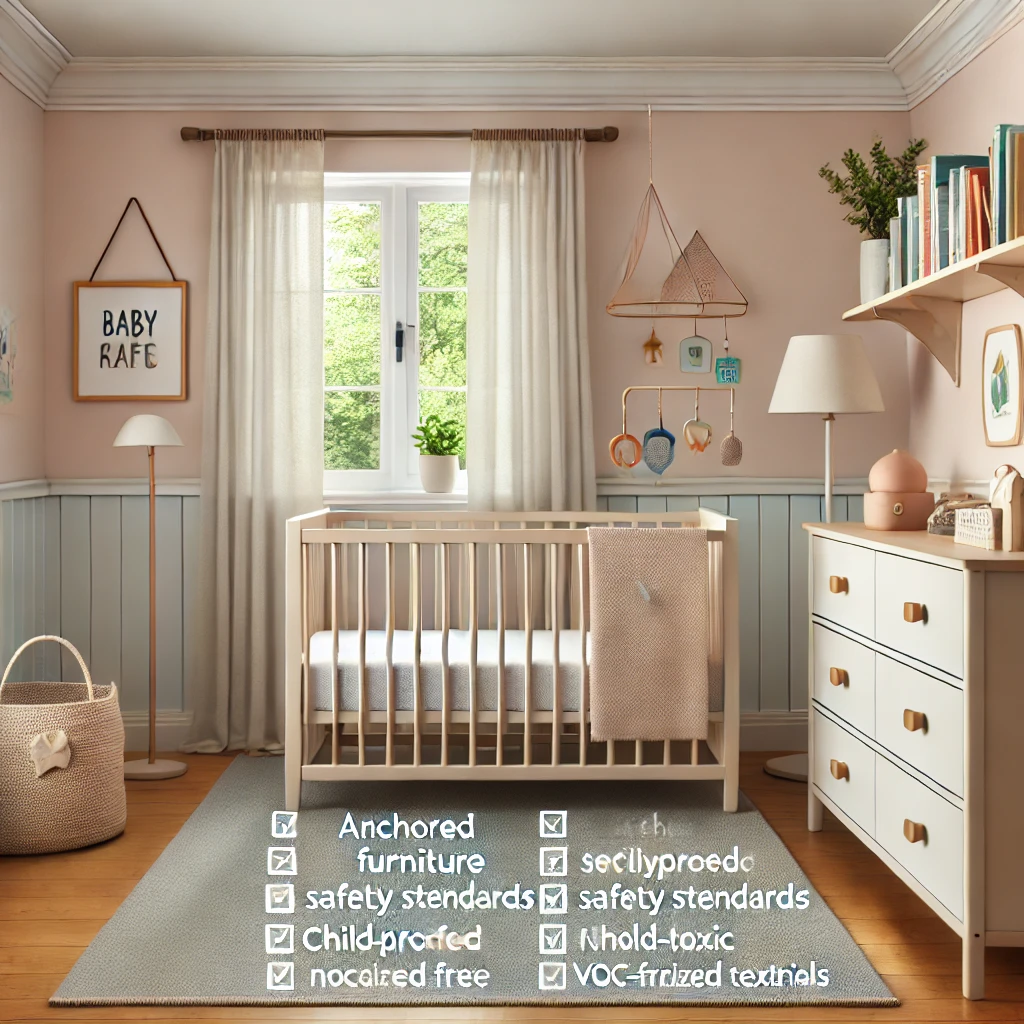
2. Functional Layout
- Zones: Create distinct areas for sleeping, changing, and playing. For example:
- Crib Area: A calming spot away from windows and direct light.
- Changing Station: Keep diapers, wipes, and clothes within arm’s reach for convenience.
- Play Zone: A soft mat or rug with toys for safe exploration.
- Traffic Flow: Arrange furniture to allow for easy movement and access to all zones.
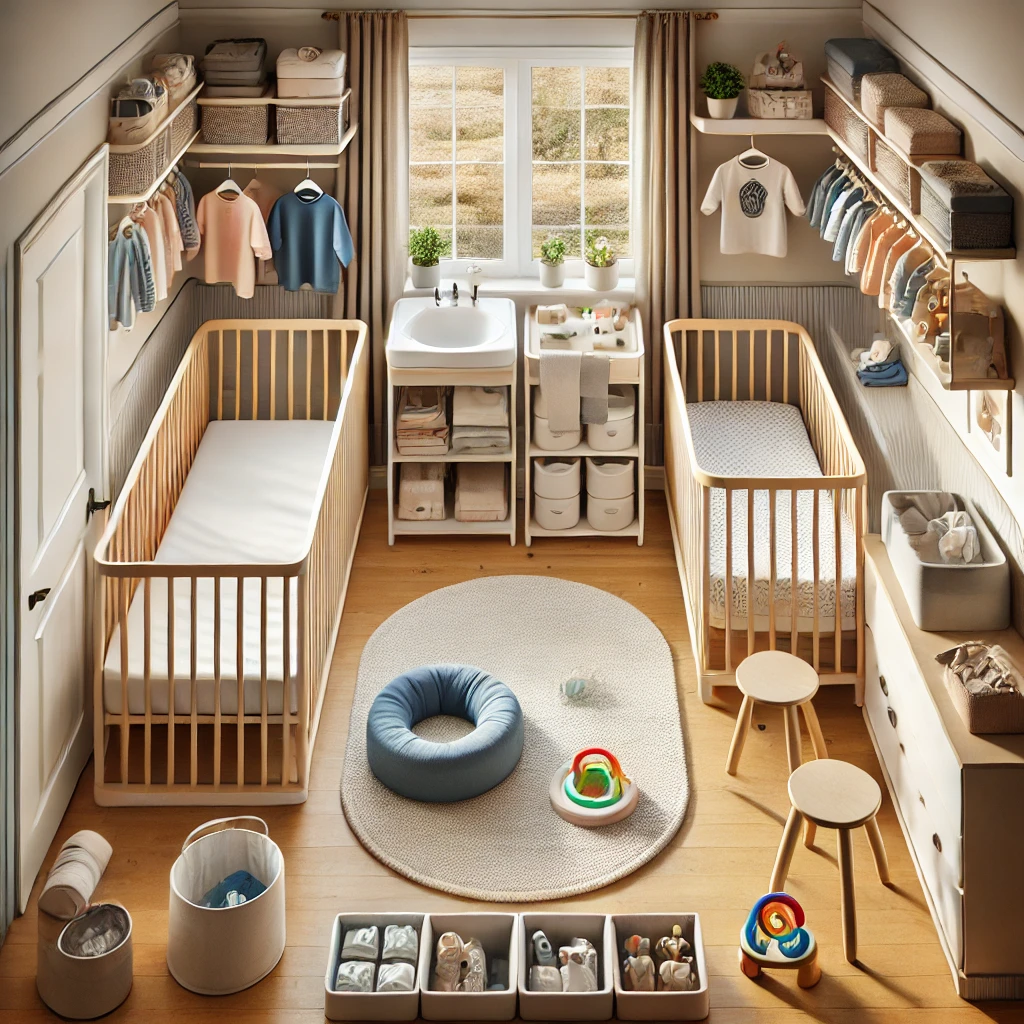
3. Comfortable Atmosphere
- Lighting: Install dimmable lights and add a soft nightlight for nighttime feedings.
- Temperature Control: Use blackout curtains and a quiet fan or white noise machine to maintain a comfortable environment.
- Soft Textures: Add a plush rug, cozy throw blankets, and comfortable seating, like a rocking chair or glider.
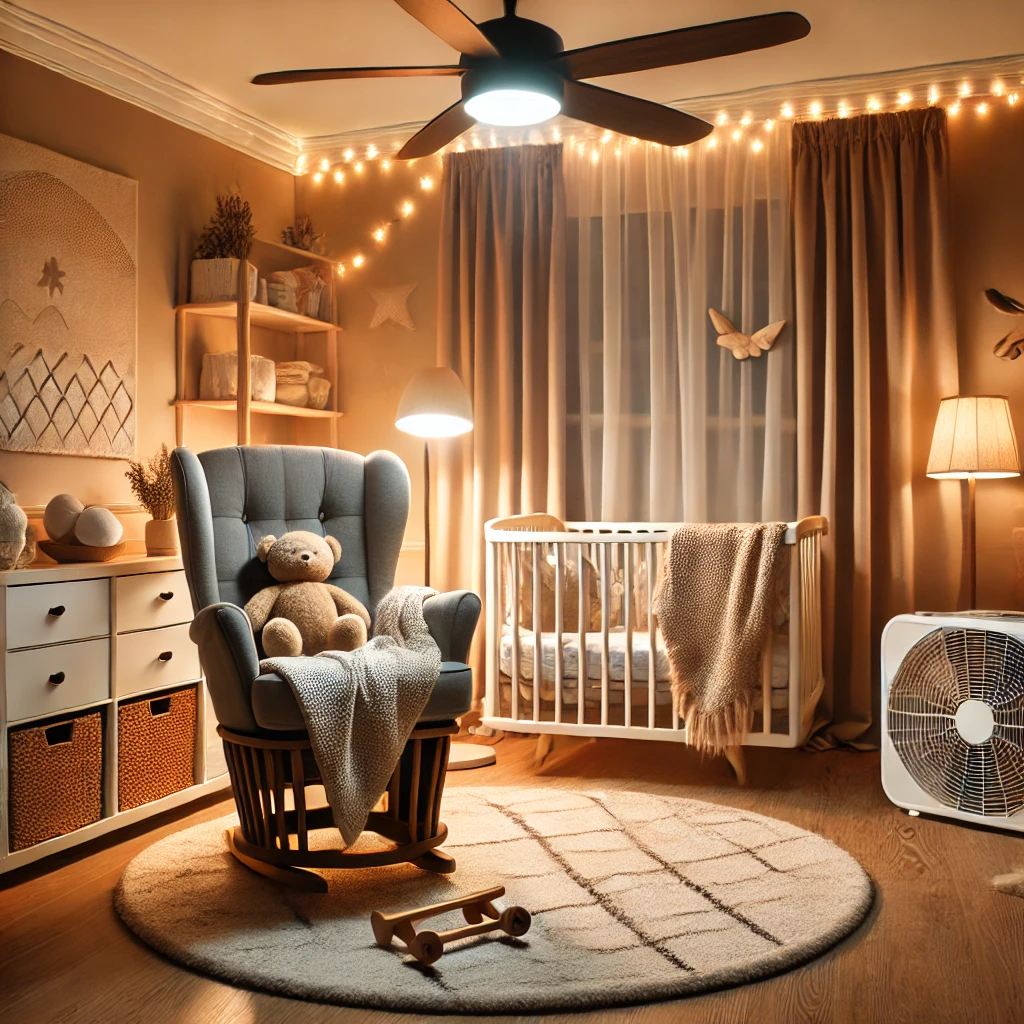
4. Storage Solutions
- Hidden Storage: Use furniture with built-in storage, like a crib with drawers or an ottoman with space inside.
- Open Shelving: Keep frequently used items, like books or toys, easily accessible on open shelves.
- Bins and Baskets: Organize small items and create a tidy look with matching bins or baskets.
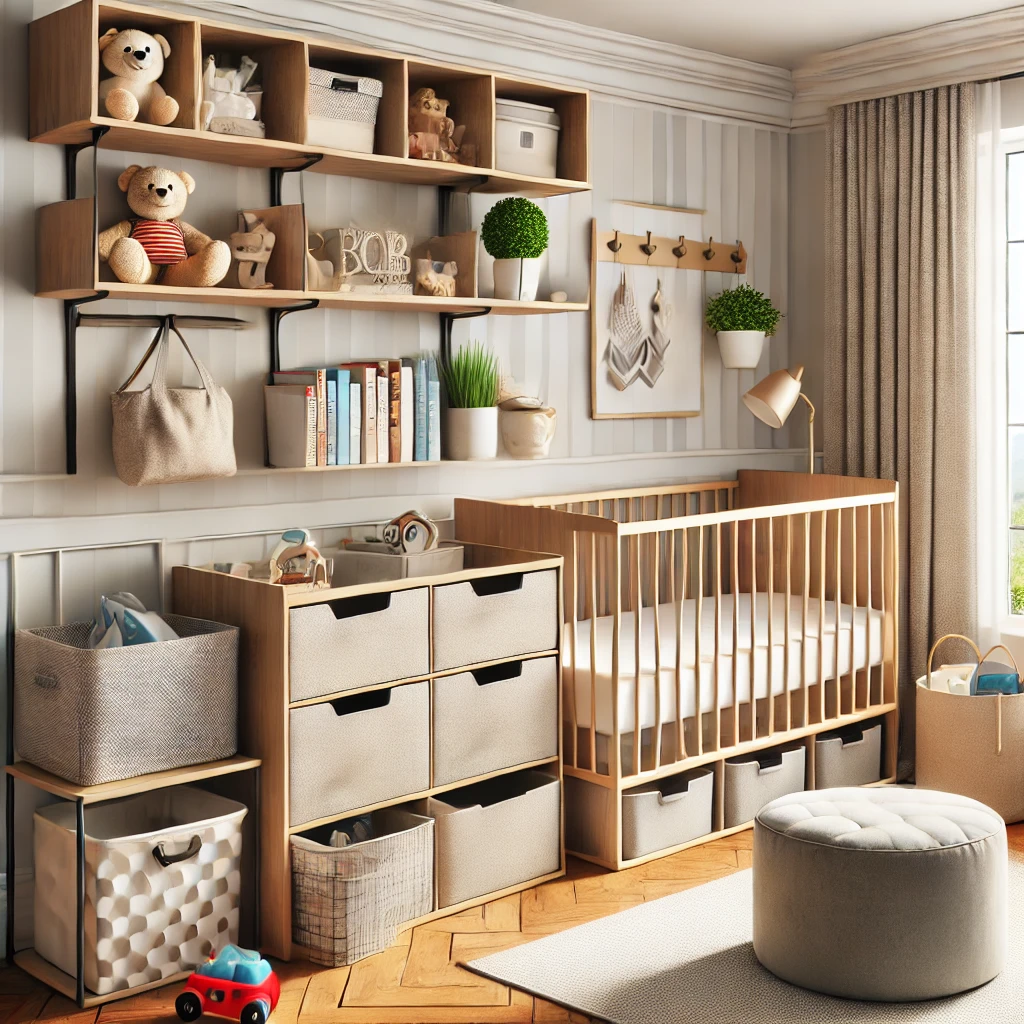
5. Personal Touches
- Color Scheme: Choose calming colors or themes that reflect your style, such as pastel shades or nature-inspired motifs.
- Decor: Add wall art, decals, or framed prints to give the nursery personality.
- Sentimental Items: Include family heirlooms, handmade crafts, or a growth chart for a meaningful touch.
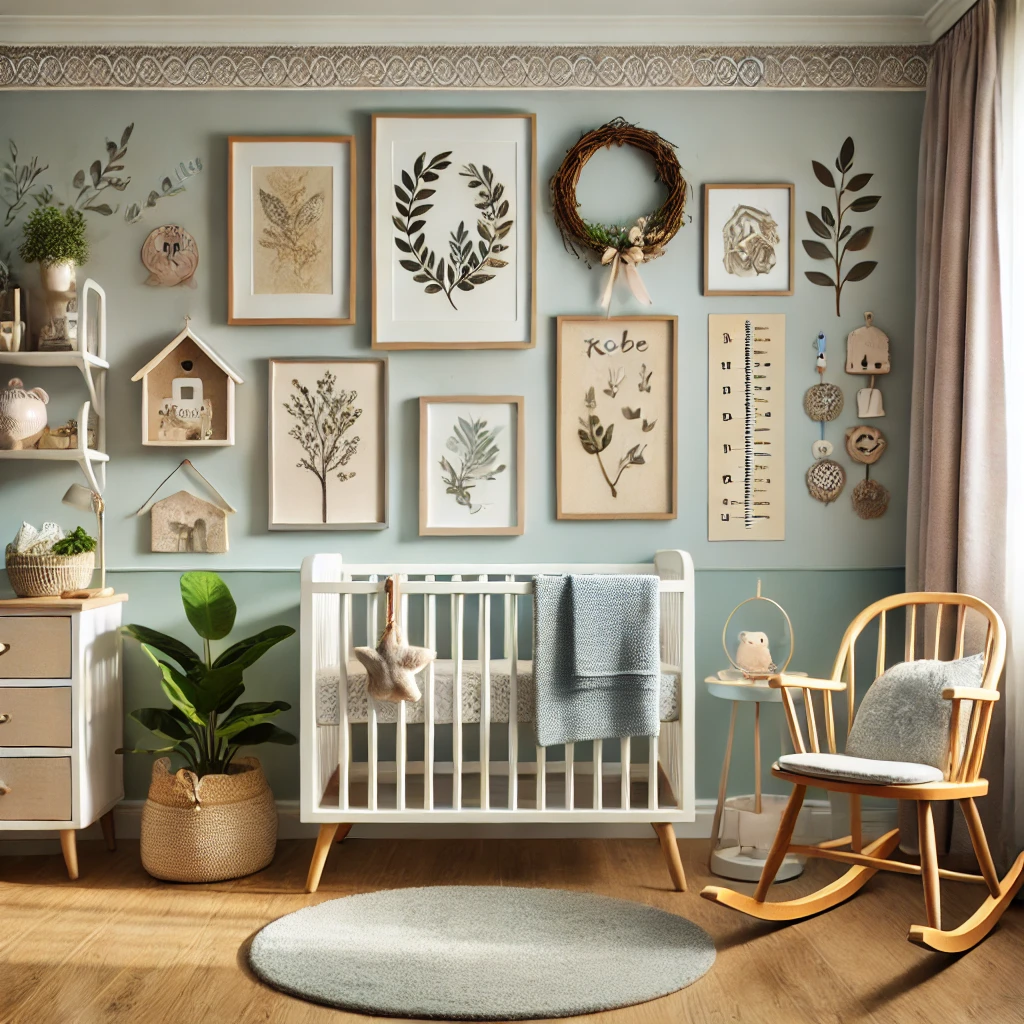
By focusing on these five building blocks, you can create a nursery that is not only beautiful and functional but also a safe and nurturing space for your little one.